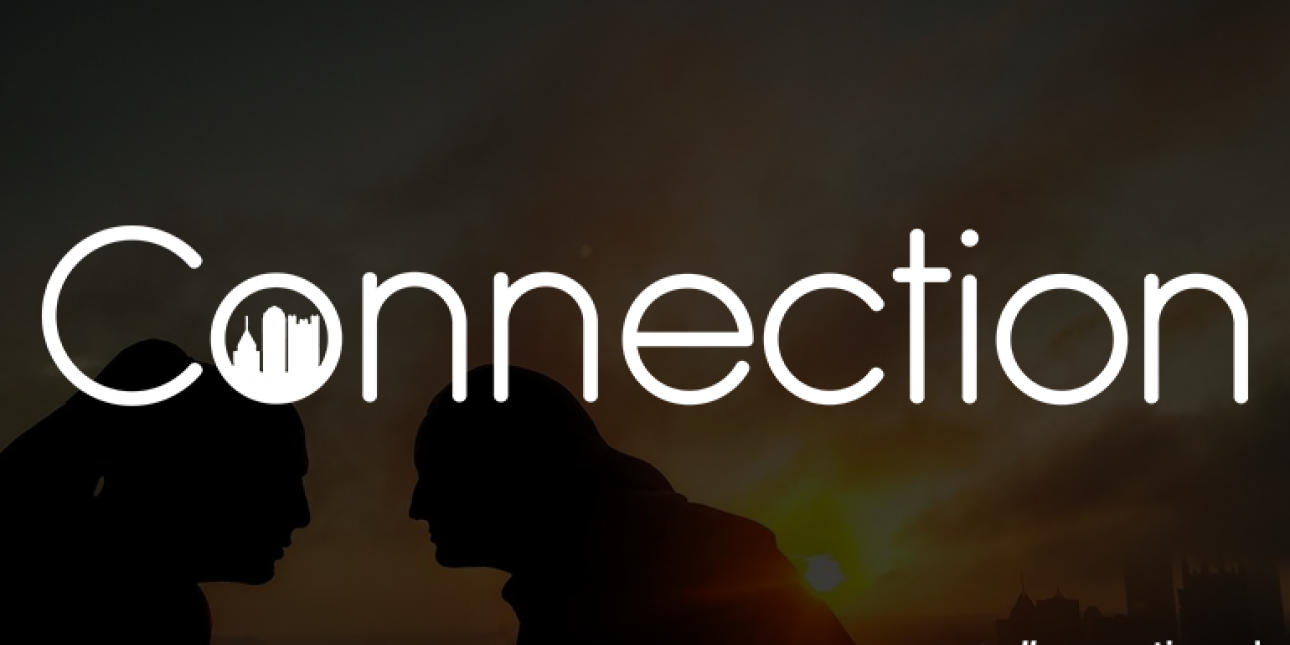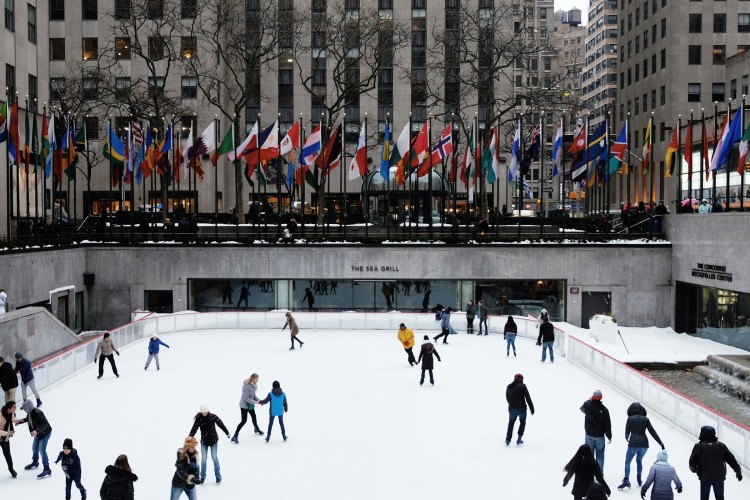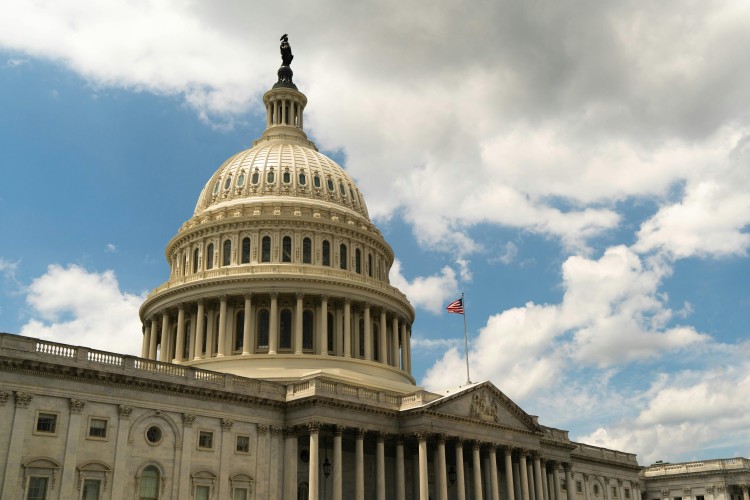#ConnectionPGH Talk: "Canaries, Coal, + Capital: The Science of Why We Need Others" by David Wertheimer

About The Speaker:
David has worked in in the non-profit, government, educational and philanthropic sectors. He has worked at the Bill & Melinda Gates Foundation since 2006, and currently serves as the foundation’s Director of Community and Civic Engagement. David is the President of the Haverford College Alumni Association, on the Board of Advisors of Partners for Our Children and the Washington State Health Innovation Leadership Network (HILN). He is the immediate past Board Chair of Funders Together to End Homelessness and served as co-Chair of the Seattle Housing Affordability and Livability Agenda Task Force. A New York City native, David was Executive Director of the NYC Gay & Lesbian Anti-Violence Project and a NYC Human Rights Commissioner.
About Connection 2017:
The Connection 2017 experience took place in Pittsburgh, PA. To learn more about the event, click here.
About The Talk:
In this incredible Connection 2017 opening talk, David links together mustaches, canaries, and a boat race to talk about the problems our society is currently facing, and what we can do to make a difference.
Talk Transcript:
I'm gonna talk to you this morning about a bunch of things. Because we're in Pittsburgh, I'm going to talk a little about coal mines. I'm gonna talk about canaries, I'm gonna talk about social capital, mustaches, and I'm going to talk about the the symptoms of social distress, and the underlying challenges that that I think are underneath those. I have the amazing good fortune, good luck, to have landed a job at the Bill and Melinda Gates Foundation, where we have some core principles that guide our work. And they are really very simple: that all lives have equal value, that everyone should have the opportunity to live a healthy and productive life, and that regardless of the circumstances of your birth, where you live, or in the United States, what your zip code is, that none of those should be pre-determinants of your opportunities for success in life.  Now, we can start with the mustache. That's a big mustache, actually, think there's some nose hair... And the mustache there as well. It's pretty impressive. This guy, probably nobody's ever heard of him, nobody's ever seen this picture before. This guy is named John Scott Haldean, and John Scott Haldean was an inventor, a scientist. He developed something called oxygen therapy, which you also may never heard of, and he was also interested in something he called sentinel species. And in particular for today's talk, the sentinel species he's interested in was the canary, because coal miners in the 19th and early 20th century when he was around often faced very dangerous conditions in the mine. Toxic gases, carbon monoxide, other gases they couldn't smell, which sometimes, because there was no indication that they were in the mines, would kill large numbers of miners before they could get to safety. Canaries, however, are very sensitive to these gases and would get sick or die in the mines before the miners were affected by the gas. And so Haldean suggested that miners take canaries with them into the mines as a sentinel species to warn them when gas level had reached toxic levels. Not so good for the canaries, but very good for the miners. So between 1911 when he developed this approach and 1986, coal miners and canaries were inseparable. And here you see in this amazing picture in 1986, this picture was taken of the very last coal miner in Great Britain to go down in the mines with his canary. And you can see the incredible relationship between this tiny creature and this coal miner, who was dependent on that little animal for his life. Now fortunately for canaries, in 1986, they developed an alternative to the canary in the coal mine, the “artificial canary,” if you will, a sensor that could determine if toxic levels of gases were present, and an alarm would go off. What I love about the sensor: this is a picture of one of the first sensors for coal miners, that was yellow like a canary, so it was like this little canary they would wear on their belts. They would go off if the mine had the levels of gas that were dangerously toxic. So here for a minute in this talk, what are the canaries in our coal mine? What are the indicators in our society that things are seriously dangerously wrong? There are many candidates for this. One is homelessness, something you see in all of our cities across the United States, increasingly in rural areas, as well, although it’d be harder to find. Or the decay of our urban infrastructure, cities that are literally rotting. Is it the prison industrial complex? The fact that the United States with about 2 percent of the world's population incarcerates 25 percent of the world's incarcerated population. Disproportionately, affecting African-American men and other minority groups. Or, is it evictions from housing?
Now, we can start with the mustache. That's a big mustache, actually, think there's some nose hair... And the mustache there as well. It's pretty impressive. This guy, probably nobody's ever heard of him, nobody's ever seen this picture before. This guy is named John Scott Haldean, and John Scott Haldean was an inventor, a scientist. He developed something called oxygen therapy, which you also may never heard of, and he was also interested in something he called sentinel species. And in particular for today's talk, the sentinel species he's interested in was the canary, because coal miners in the 19th and early 20th century when he was around often faced very dangerous conditions in the mine. Toxic gases, carbon monoxide, other gases they couldn't smell, which sometimes, because there was no indication that they were in the mines, would kill large numbers of miners before they could get to safety. Canaries, however, are very sensitive to these gases and would get sick or die in the mines before the miners were affected by the gas. And so Haldean suggested that miners take canaries with them into the mines as a sentinel species to warn them when gas level had reached toxic levels. Not so good for the canaries, but very good for the miners. So between 1911 when he developed this approach and 1986, coal miners and canaries were inseparable. And here you see in this amazing picture in 1986, this picture was taken of the very last coal miner in Great Britain to go down in the mines with his canary. And you can see the incredible relationship between this tiny creature and this coal miner, who was dependent on that little animal for his life. Now fortunately for canaries, in 1986, they developed an alternative to the canary in the coal mine, the “artificial canary,” if you will, a sensor that could determine if toxic levels of gases were present, and an alarm would go off. What I love about the sensor: this is a picture of one of the first sensors for coal miners, that was yellow like a canary, so it was like this little canary they would wear on their belts. They would go off if the mine had the levels of gas that were dangerously toxic. So here for a minute in this talk, what are the canaries in our coal mine? What are the indicators in our society that things are seriously dangerously wrong? There are many candidates for this. One is homelessness, something you see in all of our cities across the United States, increasingly in rural areas, as well, although it’d be harder to find. Or the decay of our urban infrastructure, cities that are literally rotting. Is it the prison industrial complex? The fact that the United States with about 2 percent of the world's population incarcerates 25 percent of the world's incarcerated population. Disproportionately, affecting African-American men and other minority groups. Or, is it evictions from housing?  Fascinating book just written by Matthew Desmond, a couple years ago, about eviction. And in that book he basically says that eviction is to African-American women, what incarceration is to African-American men. It promotes the disintegration of the family, the loss of core social fabric, and distress, and despair. Or, is it the lack of resources available to treat severe and persistent mental illness? The fact that so many people facing the the trauma of mental illness don't have access to the services and supports they need to recover. Or, is it the epidemic of substance abuse in this country, which we still treat as a moral character failing, rather than the disease that it is? And as a result, we don't support the services and the care that's required for recovery. All of these things collectively, I would argue, are some of the canaries in the coal mine. They reflect the the absence of the infrastructure in our country, the resources, the supports that are needed to address some of the most significant conditions that we face. I ask you to think for a moment, in your own lives, what are the canaries in your coal mine? What's interesting though about canaries and coal mines is that I don't think that these symptoms are actually the problems that we need to address. The symptoms of other diseases: these are the symptoms of the toxic gases, if you will, that the miners most fear in the coal mine. Gases they can't smell, they can't see, they can't taste, but nonetheless, have the potential to kill your the canaries. These are the symptoms the canary can pick up, but what are the underlying conditions? I think there are three that I want to talk about today. There are probably more, but three key ones: one is structural racism, second is extreme income inequality, and the third is the fragmentation of the safety net, and then talk a little bit about each of those. First, structural racism. Well, structural racism is more than the experience of privilege that I have everyday as a white man. It's more than the immediate experience on a day-to-day basis that many of you, and many of my friends and colleagues, face from communities of color. It's not just what we experience one-on-one with each other in our lives, but it's the system of thoughts, beliefs, institutions, practices, and history that reinforce the racist paradigms of our society. We all experience it in different ways, but it's something that's extremely debilitating. It is a toxic gas in our society.
Fascinating book just written by Matthew Desmond, a couple years ago, about eviction. And in that book he basically says that eviction is to African-American women, what incarceration is to African-American men. It promotes the disintegration of the family, the loss of core social fabric, and distress, and despair. Or, is it the lack of resources available to treat severe and persistent mental illness? The fact that so many people facing the the trauma of mental illness don't have access to the services and supports they need to recover. Or, is it the epidemic of substance abuse in this country, which we still treat as a moral character failing, rather than the disease that it is? And as a result, we don't support the services and the care that's required for recovery. All of these things collectively, I would argue, are some of the canaries in the coal mine. They reflect the the absence of the infrastructure in our country, the resources, the supports that are needed to address some of the most significant conditions that we face. I ask you to think for a moment, in your own lives, what are the canaries in your coal mine? What's interesting though about canaries and coal mines is that I don't think that these symptoms are actually the problems that we need to address. The symptoms of other diseases: these are the symptoms of the toxic gases, if you will, that the miners most fear in the coal mine. Gases they can't smell, they can't see, they can't taste, but nonetheless, have the potential to kill your the canaries. These are the symptoms the canary can pick up, but what are the underlying conditions? I think there are three that I want to talk about today. There are probably more, but three key ones: one is structural racism, second is extreme income inequality, and the third is the fragmentation of the safety net, and then talk a little bit about each of those. First, structural racism. Well, structural racism is more than the experience of privilege that I have everyday as a white man. It's more than the immediate experience on a day-to-day basis that many of you, and many of my friends and colleagues, face from communities of color. It's not just what we experience one-on-one with each other in our lives, but it's the system of thoughts, beliefs, institutions, practices, and history that reinforce the racist paradigms of our society. We all experience it in different ways, but it's something that's extremely debilitating. It is a toxic gas in our society.

A graph of the ratio of CEO compensation at top companies in comparison to the average worker. Source
Extreme income inequity, the growing distance between what the CEO earns and what the line worker earns in the factory owned by the CEO. The fact that wages have not kept pace with the cost of living, and that housing is out of reach to so many Americans, as well as the basic necessities of life. That so many people who are homeless in this country are working, and nonetheless, cannot afford the basic survival necessities of life. And the fragmentation of the safety net, the reality of the disconnectedness of all of the services and supports that we need. The fact that we care less and less about putting the pieces together in a human centered design fashion that allows the person to be at the center of the solution to the problems. It's a byproduct of whether you want to call it, “the prosperity gospel” or “compassionate conservatism” that takes responsibility away from government, away from us collectively, and says that the individual, or the family, or the community without the resources to solve the challenges that we face are responsible to create their own solutions. So, what's the solution to all of this? From my perspective, it's a pretty bleak, despairing opening talk for this Connection conference, right? Well, I actually think one of the key solutions is something a little bit elusive, but critically important, called “social capital.” now what is social capital? It's strange term, means different things to different people. Social capital is many things, but it's about the connections (this conference) that we have to each other, and to the systems that we care about the most. It's about bonding, it's about community, it's about valuing life. It's about safety, participation, networks, inclusion, power. Now, there are both positive and negative forms and manifestations of social capital. Here's a negative one: gangs. Gangs are a form of social capital. They are alternative family networks. They are self-proclaimed tribes. They’re extended kinship networks in a non kinship environment. And here's an example of one: the Aryan Brotherhood and the Nazi low-riders. They are a gang, if you will. They are social capital to each other, and we're back to the mustaches by the way, a lot of mustaches. Notice how similar these guys look. Granted, these are all mug shots, but they don't look too happy. But the bald head, the ink, the mustaches, they're trying to create an identity as a tribe, as a gang, and they are not at all about challenging, in fact about reinforcing, the structures of racism, extreme income inequality, and the fragmentation of the safety net.  Let me give an example of a much more positive form of social capital. Anybody is here from the Pacific Northwest? This is an amazing annual event, called the “canoe journey” where Pacific Northwest coastal tribes and First Nation communities from Canada start in their home communities in canoes and travel to a joint celebration where they learn from their elders. They learn from each other, they share stories of their tribes, of their nations, of their communities, and they build this amazing rapport rooted in the traditions of their communities that go back thousands of years that create incredible social capital connections to each other. That's positive social capital. So finally, in closing, where do I get off talking about all this stuff as an old white guy? Well, in the 1980s, I lived in New York City. That's where I grew up, and I was in my 20s and 30s as a gay man during an amazing and horrible crisis, when AIDS was flowering in the gay male community. It was a bleak time. There were very few treatments, there were no treatments, really, and as your friends and colleagues were diagnosed you would visit them in the hospital and within three weeks to a couple of months after their diagnosis they were gone. They were dead. And 75-80 percent of the men that I knew and loved in New York at that time died. I thought, somehow my entire community is being shattered, my tribe, my extended kinship network, my social capital was being destroyed before my eyes.
Let me give an example of a much more positive form of social capital. Anybody is here from the Pacific Northwest? This is an amazing annual event, called the “canoe journey” where Pacific Northwest coastal tribes and First Nation communities from Canada start in their home communities in canoes and travel to a joint celebration where they learn from their elders. They learn from each other, they share stories of their tribes, of their nations, of their communities, and they build this amazing rapport rooted in the traditions of their communities that go back thousands of years that create incredible social capital connections to each other. That's positive social capital. So finally, in closing, where do I get off talking about all this stuff as an old white guy? Well, in the 1980s, I lived in New York City. That's where I grew up, and I was in my 20s and 30s as a gay man during an amazing and horrible crisis, when AIDS was flowering in the gay male community. It was a bleak time. There were very few treatments, there were no treatments, really, and as your friends and colleagues were diagnosed you would visit them in the hospital and within three weeks to a couple of months after their diagnosis they were gone. They were dead. And 75-80 percent of the men that I knew and loved in New York at that time died. I thought, somehow my entire community is being shattered, my tribe, my extended kinship network, my social capital was being destroyed before my eyes.  And in the middle of this, I was invited to be a subject in a study with thousands of gay men in New York that was done by Columbia University, and you had to do an interview every year. You sat down for three hours, once a year, and they asked you questions. And for years, I was like, “what are these?” they would ask me, you know:,
And in the middle of this, I was invited to be a subject in a study with thousands of gay men in New York that was done by Columbia University, and you had to do an interview every year. You sat down for three hours, once a year, and they asked you questions. And for years, I was like, “what are these?” they would ask me, you know:,
- “If you left town for the weekend, is there someone who could water your plants?”
- “If you needed to to leave, was there somebody who could take care of your cat?”
- “If you lost your job, is there someone who could give you a place to live?”
- “Is there someone who could help you find a new job?”
- “Is there someone you can talk to about your sexual safety, and your practices in the community?”
- “Is there someone that you can confide in about your fears, your concerns, your joys, the things that worry you the most?
I thought year after year about these questions they were asking me. I realized that they were defining my social capital. They were helping me understand what my network, was what my support system was, what my tribe was. I realized year after year, as many of the men that I knew who were also in the study got sick and died as well, that for me, my lifeboat was my social capital. My lifeboat were the people that I could talk to about the things that most concerned me in my life. And my life boat was being able to get involved in an organization like Act-Up that was taking to the streets to make noise about a crisis that nobody seemed to give a rat's patootie about. So I ask you in closing, again, what's your social capital? What is your network, and how can you mobilize that network to support yourself, your own vibrancy, in your life, your family, your community, your tribe, your extended kinship network of choice. How can you use that social capital network and the power that you have through it to change the world? Thank you.


